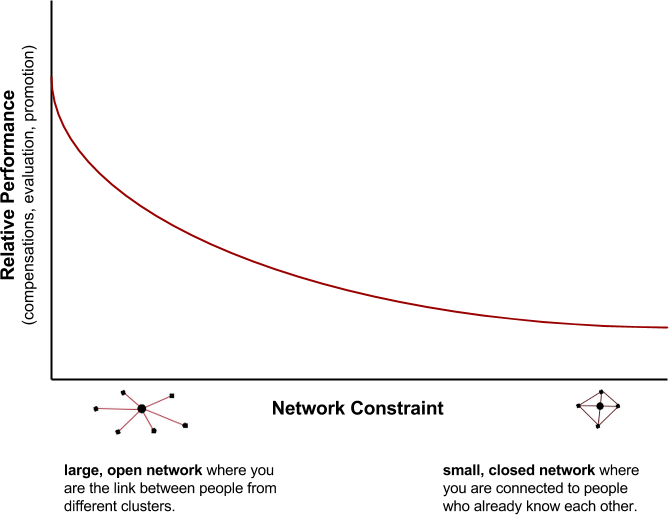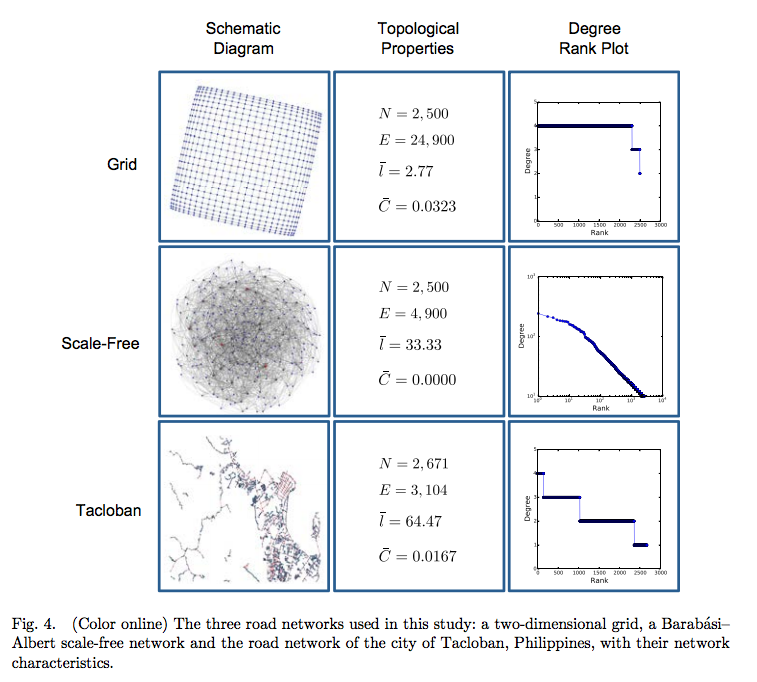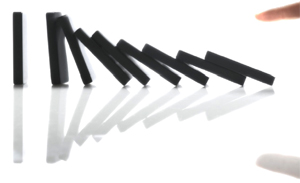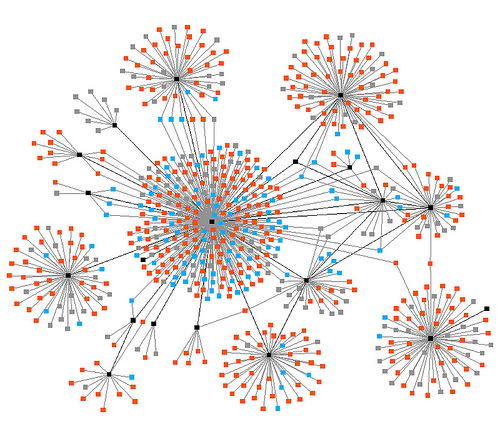Science News blogger Bethany Brookshire applies network thinking to a recent study by Pew Research Center and the American Association for the Advancement of Science that illustrates the opinion gap between scientists and “non-scientists” on a number of current issues. She interprets the corollary demographic data as evidence of a “balance theory” and “eco-chamber” and effects in the American consumption of news. Kevin Lewis, a sociologist at the University of California, San Diego summaries this perspective, saying that: “I could write the most brilliant op-ed you’ve ever seen, but if I’m saying something someone disagrees with, they aren’t going to listen.”
Read the full article here: https://www.sciencenews.org/blog/scicurious/scientists-feather-flock-together
Read Pew’s report here: http://www.pewinternet.org/2015/01/29/public-and-scientists-views-on-science-and-society/



 A study from Queensland University of Technology in Australia, examining more than 3,000 One-Day International matches from 1971-2014, found that cricket batsmen who were close to reaching personal milestones were less likely to be dismissed by their captain. That is, if a cricket captain is thinking about possibly declaring (ending his team’s batting to avoid a draw if time expires), he may decide to wait a bit more if one of the batsmen is close to a landmark (scoring 50, 100 or 200). For instance, if a batsman has a score of 90, not declaring will provide the chance for this batsman to score a “century,” but also wastes time if his team is sufficiently ahead in runs. This strategy at first sight, seems detrimental to the team because the decision to declare an innings should be entirely determined by the team’s overall score or the field conditions, not by its individual batsmen’s score. However, the authors suggest that this balance by captains could be done as a form of social-exchange, where the captain hopes the risk in allowing a player to reach a strictly personal goal is repaid by a higher level of overall performance by not only that player, but other players in the team who appreciate the captain’s gesture. This research highlights the complexities of how leaders must manage both an individual’s and the team’s goals, and how the two may interact to influence team performance.
A study from Queensland University of Technology in Australia, examining more than 3,000 One-Day International matches from 1971-2014, found that cricket batsmen who were close to reaching personal milestones were less likely to be dismissed by their captain. That is, if a cricket captain is thinking about possibly declaring (ending his team’s batting to avoid a draw if time expires), he may decide to wait a bit more if one of the batsmen is close to a landmark (scoring 50, 100 or 200). For instance, if a batsman has a score of 90, not declaring will provide the chance for this batsman to score a “century,” but also wastes time if his team is sufficiently ahead in runs. This strategy at first sight, seems detrimental to the team because the decision to declare an innings should be entirely determined by the team’s overall score or the field conditions, not by its individual batsmen’s score. However, the authors suggest that this balance by captains could be done as a form of social-exchange, where the captain hopes the risk in allowing a player to reach a strictly personal goal is repaid by a higher level of overall performance by not only that player, but other players in the team who appreciate the captain’s gesture. This research highlights the complexities of how leaders must manage both an individual’s and the team’s goals, and how the two may interact to influence team performance.
 “The world is going to teamwork. In the 1950s, about half of our work was done in teams. Today, by one measure, it’s more like 90 percent. Maybe it’s at the office. Maybe it’s on Google Hangout. Maybe it’s at the PTA. But what makes a good team? A smart team? It’s not just a bunch of smart people, says a big new study. It’s a crew that shares the floor, the talking time, it claims. It’s a team that has high social sensitivity. And it’s often, it says, a team with more women. We need a cultural revolution, they say, to optimize our teams. This hour On Point: Are you onboard? We’re talking teamwork.” -Tom Ashbrook
“The world is going to teamwork. In the 1950s, about half of our work was done in teams. Today, by one measure, it’s more like 90 percent. Maybe it’s at the office. Maybe it’s on Google Hangout. Maybe it’s at the PTA. But what makes a good team? A smart team? It’s not just a bunch of smart people, says a big new study. It’s a crew that shares the floor, the talking time, it claims. It’s a team that has high social sensitivity. And it’s often, it says, a team with more women. We need a cultural revolution, they say, to optimize our teams. This hour On Point: Are you onboard? We’re talking teamwork.” -Tom Ashbrook


 Cuba has been in the headlines recently with the president Obama’s decision to lift the 55-year-long trade embargo on the country.
Cuba has been in the headlines recently with the president Obama’s decision to lift the 55-year-long trade embargo on the country.
 In recent years, the spread of information over social networks has become a global phenomenon. Scientists have begun to study how information spreads from person to person, and how individuals’ motivations can cause a cascade effect in behavior. Researchers note that often “cascading behavior in a social network is guided by an entity that wants to achieve a certain outcome, for example… a political movement might be trying to guide the success of its message in a population.”
In recent years, the spread of information over social networks has become a global phenomenon. Scientists have begun to study how information spreads from person to person, and how individuals’ motivations can cause a cascade effect in behavior. Researchers note that often “cascading behavior in a social network is guided by an entity that wants to achieve a certain outcome, for example… a political movement might be trying to guide the success of its message in a population.” The study of the network of networks, or interdependent networks, has become increasingly important. Interdependent networks are hugely prevalent especially in food, water, and fuel delivery systems. Scientists at Northeastern, Beihang, and Bar-Ilan Universities wrote in the National Science Review that the study of network of networks is “one of the most important directions in network science”.
The study of the network of networks, or interdependent networks, has become increasingly important. Interdependent networks are hugely prevalent especially in food, water, and fuel delivery systems. Scientists at Northeastern, Beihang, and Bar-Ilan Universities wrote in the National Science Review that the study of network of networks is “one of the most important directions in network science”.